Search thousands of Science video resources
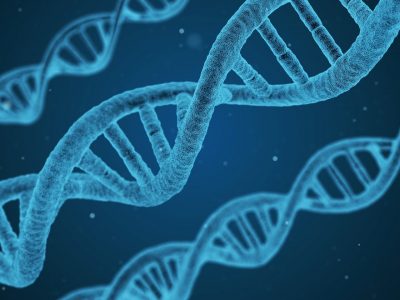
The human digestive system
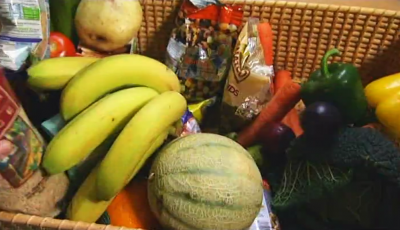
Bowel cancer and 'transit time' | Dr Alice Roberts: Don't Die Young
Bowel cancer and 'transit time' | Dr Alice Roberts: Don't Die Young
Alice does a test with Les eating sweetcorn to see how long it takes for them to digest the food until ex...

What does your stomach look like from the inside? | Guts: The Strange and Wonderful World of the Human Stomach
What does your stomach look like from the inside? | Guts: The Strange and Wonderful World of the Human Stomach
Michael Mosley finds out what happens inside our stomachs by s...

Journey through guts | Dara O'Briain's Science Club
Journey through guts | Dara O'Briain's Science Club
A camera travels through the digestive system.

Digestive powers | Guts: The Strange and Wonderful World of the Human Stomach
Digestive powers | Guts: The Strange and Wonderful World of the Human Stomach
The digestive powers of the gastric juices within the human stomach are tested.

Stomach and intestines | Dr Alice Roberts: Don't Die Young
Stomach and intestines | Dr Alice Roberts: Don't Die Young
Alice shares some facts about the stomach and intestines.

Saliva test | The Secrets of Your Food
Saliva test | The Secrets of Your Food
A saliva test reveals the role of our senses in saliva production and in our digestive system as a whole.

The brain in our gut | Guts: The Strange and Wonderful World of the Human Stomach
The brain in our gut | Guts: The Strange and Wonderful World of the Human Stomach
Our intestines are remarkable similar to that of a pigs.

Anatomy of a stomach | Dr Alice Roberts: Don't Die Young
Anatomy of a stomach | Dr Alice Roberts: Don't Die Young
Alice dissects a pigs stomach to show how a human one works. She also tests her own stomach acid.

Enzyme power and food as fuel | Bitesize Science
Enzyme power and food as fuel | Bitesize Science
Enzymes are biological catalysts which help us to get the energy we need from food to survive.
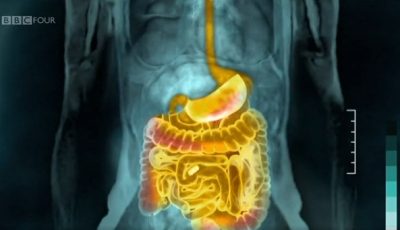
The large intestine | Guts: The Strange and Wonderful World of the Human Stomach
The large intestine | Guts: The Strange and Wonderful World of the Human Stomach
A camera travels through the last part of the digestive system and explores the role of the ...

Burning Calories | The Truth About…
Burning Calories | The Truth About…
Dr Chris van Tulleken investigates how much energy is in popular foods by setting them on fire.

The small intestine | Guts: The Strange and Wonderful World of the Human Stomach
The small intestine | Guts: The Strange and Wonderful World of the Human Stomach
A camera travels through the digestive system and shows the frenzy of digestion within the s...

How food and oxygen combine to provide energy to work the body | Inside the Human Body
How food and oxygen combine to provide energy to work the body | Inside the Human Body
Using state-of-the-art graphics, Michael Mosley explains what happens to food inside o...
Photosynthesis

How iodine was used to discover starch in plant leaves | Botany: A Blooming History
How iodine was used to discover starch in plant leaves | Botany: A Blooming History
How botanists made the connection between a plant's growth and the energy from the sun.

Rate of photosynthesis | i-Science
Rate of photosynthesis | i-Science
Photosynthesis is the chemical reaction through which plants make glucose and oxygen. It is crucial to all life on Earth because it is the...

The discovery of chloroplast | Botany: A Blooming History
The discovery of chloroplast | Botany: A Blooming History
Timothy Walker explains how Julius von Sachs discovered where starch was made in a plant, and how new microscopy te...

Safety in numbers | Life
Safety in numbers | Life
A clan of hyenas work together to protect themselves from lions.

An introduction to photosynthesis | Short Circuit
An introduction to photosynthesis | Short Circuit
An introduction to how plants photosynthesise using chlorophyll, and how important the process is in maintaining the balanc...
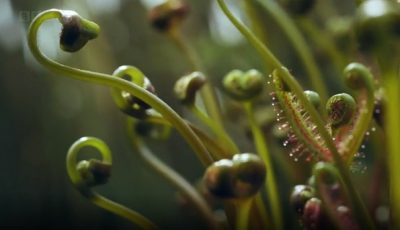
Searching for sunlight | Life
Searching for sunlight | Life
Different species of plants adopt a variety of ingenius techniques to secure much needed sunlight.

Calvin-Benson cycle | Botany: A Blooming History
Calvin-Benson cycle | Botany: A Blooming History
How Benson and Calvin established the biochemical reactions involved in photosynthesis.
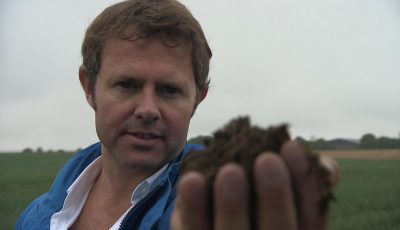
How photosynthesis is vital to the success of farming | Science of the Harvest
How photosynthesis is vital to the success of farming | Science of the Harvest
Stefan Gates reveals how we can see photosynthesis in action using some simple props.

Generation of clean fuels | Botany: A Blooming History
Generation of clean fuels | Botany: A Blooming History
Scientists harnessing the processes in photosynthesis.
Energy

Gas turbine technology | Bang Goes the Theory
Gas turbine technology | Bang Goes the Theory
A demonstration of how gas turbine technology works.
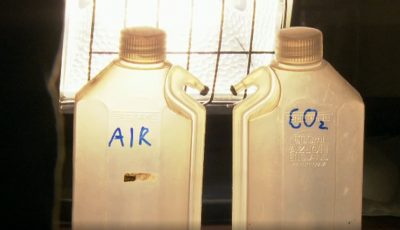
Greenhouse effect | Making Scotland's Landscape
Greenhouse effect | Making Scotland's Landscape
An experiment that demonstrates the greenhouse effect.

Carbon capture and storage | Planet Oil: The Treasure That Conquered the World
Carbon capture and storage | Planet Oil: The Treasure That Conquered the World
Professor Iain Stewart investigates CCS, a process that is attempting to reduce carbon dioxide...
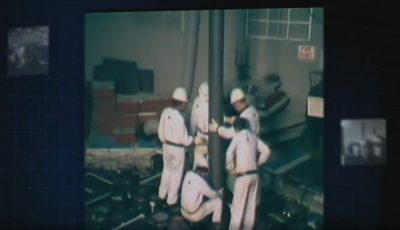
Britain's relationship with nuclear energy | Powering Britain
Britain's relationship with nuclear energy | Powering Britain
The history of Britain's relationship with nuclear energy.

Carbon footprint of a loaf of bread | Royal Institution Christmas Lectures
Carbon footprint of a loaf of bread | Royal Institution Christmas Lectures
Dr Tara Shine discusses the carbon emissions from the process of baking a loaf of bread.
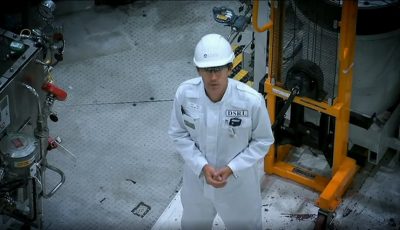
Radioactive waste | Bang Goes the Theory
Radioactive waste | Bang Goes the Theory
Dallas investigates the clean up operation for radioactive waste.
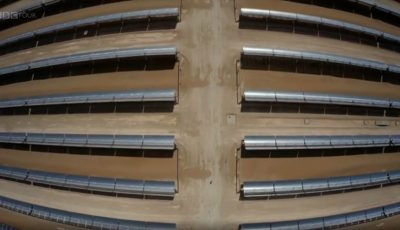
Sustainable cities | Planet Oil: The Treasure That Conquered the World
Sustainable cities | Planet Oil: The Treasure That Conquered the World
Professor Iain Stewart visits Masdar in Abu Dhabi, a city that relies on renewable energy.

Electricity and the National Grid | Powering Britain
Electricity and the National Grid | Powering Britain
How the National Grid is able to regulate electricity throughout Britain.
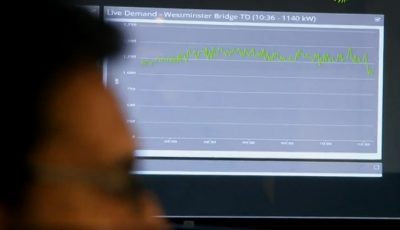
Reducing demand on the grid | Bang Goes the Theory
Reducing demand on the grid | Bang Goes the Theory
A company that aims to reduce the demand on the grid at key moments in the day,
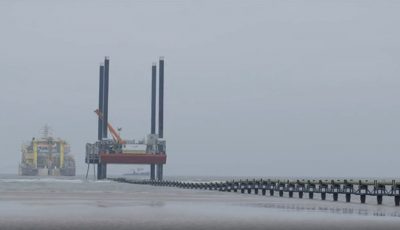
Energy transportation | Powering Britain
Energy transportation | Powering Britain
How energy made by the wind turbines is transported to our homes.

Storing renewable energy | Royal Institution Christmas Lectures
Storing renewable energy | Royal Institution Christmas Lectures
Dr Tara Shine and Dr Enass Abo-Hamed explain how we can store renewable energy.

What went wrong at Fukushima? | Bang Goes the Theory
What went wrong at Fukushima? | Bang Goes the Theory
Jem explains what caused the Fukushima nuclear disaster.
Earth and Space

Shooting Star | Brain Freeze
Shooting Star | Brain Freeze
Knowles and McCork ask the question 'What is a shooting star?'

The Earth Stopped Spinning? | Hey You, What If?
The Earth Stopped Spinning? | Hey You, What If?
Find out why stopping the earth from spinning isn't such a good idea.

Stars | Nina and the Neurons
Stars | Nina and the Neurons
When Emma from the Yorkshire Dales asks Nina to find out where stars go during the day, she needs help from Luke, the sight neuron, to find out.

Space | Brain Freeze
Space | Brain Freeze
Knowles and McCork ask the question 'What is a black hole?'

The Earth Was Flat? | Hey You, What If?
The Earth Was Flat? | Hey You, What If?
Find out why a flat Earth would feel very unflat indeed!

Space Food | Brain Freeze
Space Food | Brain Freeze
Knowles and McCork ask the question 'Could pineapples grow on the moon?'

The Earth Was Shaped Like a Doughnut? | Hey You, What If?
The Earth Was Shaped Like a Doughnut? | Hey You, What If?
Would it be possible to live on an Earth shaped like a doughnut? You might be surprised!

The Sun | Brain Freeze
The Sun | Brain Freeze
Knowles and McCork ask, when will the sun stop shining?

The Moon Was Made of Cheese? | Hey You, What If?
The Moon Was Made of Cheese? | Hey You, What If?
Things don't quite go to plan when the moon turns into cheese.

Time Zone | Brain Freeze
Time Zone | Brain Freeze
In this time zone special, Knowles and McCork ask 'Why does the Earth spin on its axis?'

You Could Actually Reach for the Stars? | Hey You, What If?
You Could Actually Reach for the Stars? | Hey You, What If?
Want to reach for the stars? It would be the journey of a lifetime - literally.
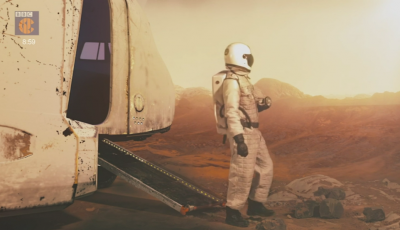
You Could Go on Holiday to Mars? | Hey You, What If?
You Could Go on Holiday to Mars? | Hey You, What If?
Experience the ultimate in long-distance travel - a holiday on Mars!

You Could Live on the Moon? | Hey You, What If?
You Could Live on the Moon? | Hey You, What If?
Some day people will live on the moon - find out just what they are in for.
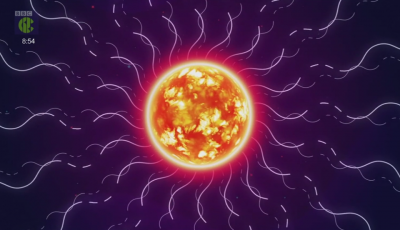
You Could Switch Off the Sun? | Hey You, What If?
You Could Switch Off the Sun? | Hey You, What If?
See what would happen if you really could switch off the sun.

You Could Take a Lift to Space? | Hey You, What If?
You Could Take a Lift to Space? | Hey You, What If?
What would happen if there really was a lift that took you all the way up to space?

You Fell Into a Black Hole? | Hey You, What If?
You Fell Into a Black Hole? | Hey You, What If?
Experience the most extraordinary ride in the universe - falling into a black hole.

You Try to Catch a Falling Star? | Hey You, What If?
You Try to Catch a Falling Star? | Hey You, What If?
What happens if you try to catch a falling star? Spoiler alert - probably best not to try!
Adaptation in plants and animals

Adaptation of Black Bear | Life In The Snow
Adaptation of Black Bear | Life In The Snow
Having woken up from hibernation to an unexpected cold front, a mother bear attempts to keep herself and her cubs alive.

Adaptation of Polar Bear | Life In The Snow
Adaptation of Polar Bear | Life In The Snow
An exploration of how polar bears have adapted to living in freezing conditions.

Adaptation of the Arctic Fox | Life In The Snow
Adaptation of the Arctic Fox | Life In The Snow
An exploration of how the artic fox's coat has adapted to survival in arctic winters.

Adaptation of the Owl | Life In The Snow
Adaptation of the Owl | Life In The Snow
An exploration of how the great grey owl has adapted to catching it's prey.

Adaptation of the Reindeer | Life In The Snow
Adaptation of the Reindeer | Life In The Snow
An exploration of how reindeer have adapted to living in freezing climates.

Coming back to life | A Perfect Planet
Coming back to life | A Perfect Planet
The Wood frog has an incredible defrosting ability.

Meow Meow | Cat Watch 2014: The New Horizon Experiment
Meow Meow | Cat Watch 2014: The New Horizon Experiment
Domesticated cats have evolved to be able to communicate as effectively with humans as with other felines.

Silver ants | Earth's Seasonal Secrets
Silver ants | Earth's Seasonal Secrets
In the Sahara desert, silver ants brave the roasting summer heat to find prey. But they have a unique secret weapon for surviving the ...

The Ibex | Forces of Nature with Brian Cox
The Ibex | Forces of Nature with Brian Cox
The spectacular sight of mountain goats defying gravity on a vertical dam wall in Italy.

The Weddell seal's adaptations | Life
The Weddell seal's adaptations | Life
The Weddell seal is perfectly adapted to survive in the environment it must endure.

Giraffe-necked weevils | Madagascar
Giraffe-necked weevils | Madagascar
Giraffe necked weevils long necks help them to fight and mate.

Sea sponge | Natural World
Sea sponge | Natural World
David Attenborough shows us why the Venus flower basket sea sponge is so amazing.

An Oak trees chemical defence system | Oak Tree: Nature's Greatest Survivor
An Oak trees chemical defence system | Oak Tree: Nature's Greatest Survivor
It may look like an oak tree is a big green heap of insect food, but eating it is not that easy. ...

Bone evolution | Secrets of Bones
Bone evolution | Secrets of Bones
Large land mammals bone structures are perfectly adapted to help them to survive.

Canopy dweller | Secrets of Bones
Canopy dweller | Secrets of Bones
Gibbons are the acrobats of the primate world, perfectly adapted to life in the trees.

Echolocation | Secrets of Bones
Echolocation | Secrets of Bones
Sperm whales have extraordinary sensory capabilities, and use echolocation to hunt and locate their prey.

Sensory Hub | Secrets of Bones
Sensory Hub | Secrets of Bones
While skulls evolved in order to protect the brain, they've since adapted to become a sensory hub.

Soar and glide | Secrets of Bones
Soar and glide | Secrets of Bones
While pigeons have adapted to be all rounders, other birds have adapted to be able to execute specialised forms of flight.
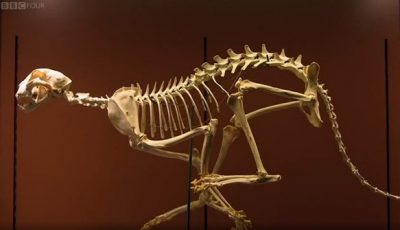
Vertebrae evolution | Secrets of Bones
Vertebrae evolution | Secrets of Bones
Snakes, cheetahs and gazelles each have specially adapted vertebrae that help them to survive.
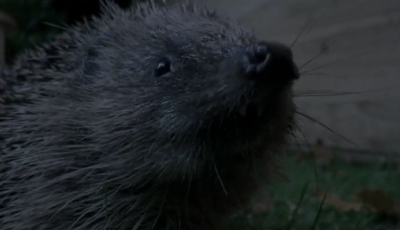
Hedgehog success | The Animal's Guide to Britain
Hedgehog success | The Animal's Guide to Britain
Hedgehogs have guaranteed survival by adapting to new habitats.

Tapir diet | The Dark: Nature's Nighttime World
Tapir diet | The Dark: Nature's Nighttime World
Tapirs, the largest forest animal in Central America, have adapted to their forest home by consuming a varied diet.

Bison weather proofing | Yellowstone
Bison weather proofing | Yellowstone
Bison in the Yellowstone National Park are well adapted to cold winters.

How bats stay one step ahead | The Wonder of Animals
How bats stay one step ahead | The Wonder of Animals
Echo-location is just one part of the overall armoury of a bat on the hunt: it also has stealth mode.
Using high-quality educational clips from sources like the BBC saves time, and the students love them!



